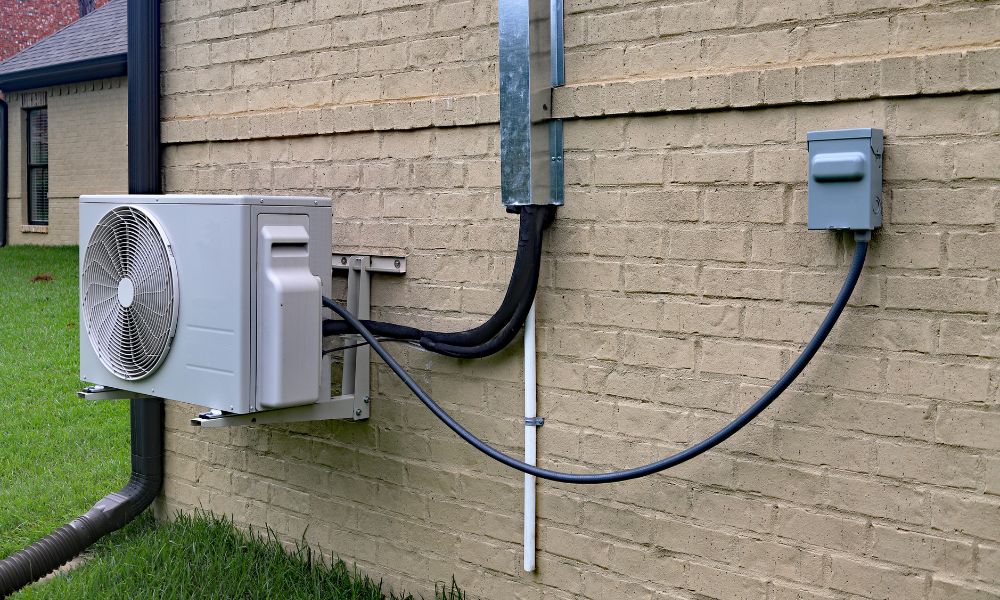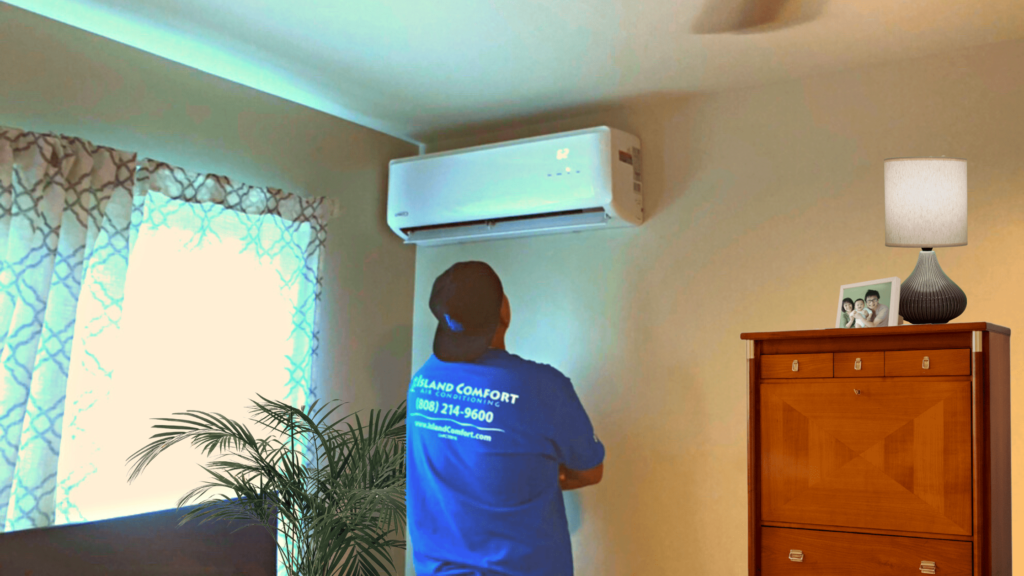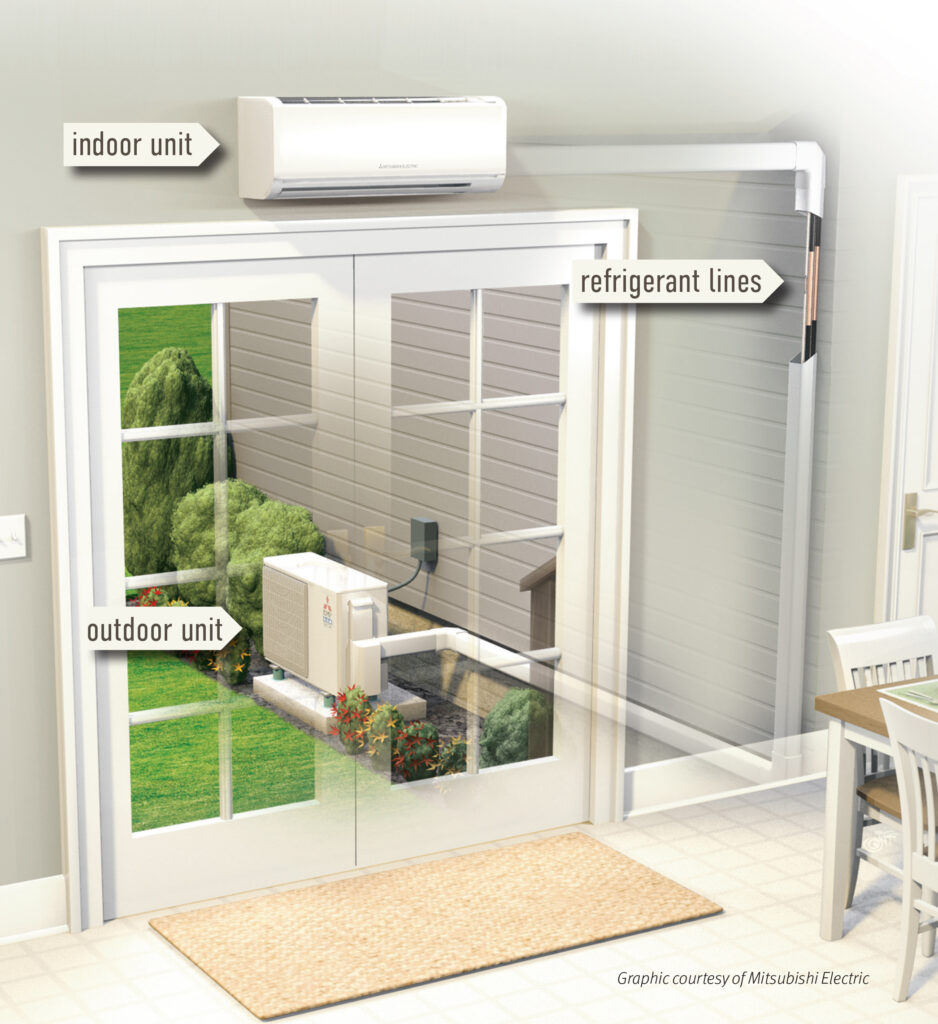Are you considering installing a mini split AC in a humid environment, but unsure of what to expect? Look no further! In this article, you will discover all the essential information you need to know before embarking on this cooling adventure. From understanding the effects of humidity on your unit’s performance to tackling potential mold and condensation issues, we’ve got you covered. So grab a cold drink, sit back, and let us guide you through the ins and outs of installing a mini split AC in a humid environment.

Understanding Mini Split AC Systems
What is a mini split AC system?
A mini split AC system, also known as a ductless AC system, is a versatile and efficient cooling solution that can be used in various settings, including homes, offices, and commercial spaces. Unlike traditional central AC systems, mini split AC systems do not require ductwork for air distribution. Instead, these systems consist of an outdoor unit and one or more indoor units, connected by refrigerant lines.
How does a mini split AC system work?
Mini split AC systems work by using refrigerant to transfer heat from the indoor environment to the outdoor unit. The indoor units blow air over the evaporator coils, which absorb heat from the room. The heated refrigerant is then carried through the refrigerant lines to the outdoor unit, where it releases the heat to the outside air. The cooled refrigerant is then pumped back inside, and the process continues, maintaining a comfortable indoor temperature.
Benefits of a mini split AC system
There are several benefits to choosing a mini split AC system, especially in a humid environment. Firstly, since mini split AC systems do not rely on ductwork, there is no risk of mold or mildew growth inside the ducts due to excess moisture. Additionally, mini split AC systems offer zonal cooling, allowing you to control the temperature in different areas or rooms independently. Moreover, these systems are highly energy-efficient, as they avoid the energy losses associated with ductwork. Lastly, mini split AC systems provide quieter operation compared to traditional AC systems, ensuring a peaceful environment.
Challenges of Installing Mini Split AC in a Humid Environment
Effects of humidity on AC systems
High humidity levels can pose challenges for AC systems, including mini split AC systems. Excess moisture in the air can lead to condensation on the evaporator coils, reducing the system’s efficiency and promoting the growth of mold and bacteria. Furthermore, high humidity can make it difficult for the AC system to effectively cool the indoor space, as the moisture in the air hinders the heat transfer process.
Moisture control and prevention
To address the challenges posed by humidity, it is crucial to implement effective moisture control and prevention measures. This can include using dehumidifiers alongside the mini split AC system to remove excess moisture from the air. Proper insulation and sealing of the indoor space can also minimize the infiltration of humid outdoor air. Regular maintenance, such as cleaning the evaporator coils and checking for any signs of moisture accumulation, is essential in preventing moisture-related issues.
Choosing the right mini split AC system
When installing a mini split AC system in a humid environment, it is important to choose a system that is specifically designed to handle high humidity conditions. Look for features such as corrosion-resistant coatings on the outdoor unit, as well as advanced humidity control options. Consulting with a professional HVAC contractor can help ensure that you select the right system that meets your specific needs in a humid environment.
Sizing and Placement Considerations
Determining the appropriate BTU capacity
Choosing the right BTU (British Thermal Units) capacity for your mini split AC system is crucial, especially in a humid environment. The BTU capacity determines the cooling power of the system and is influenced by factors such as the size of the space, the number of windows, and the level of insulation. Undersized systems may struggle to handle the cooling demands in a humid environment, while oversized systems may cycle on and off frequently, leading to inefficiency and poor humidity control.
Calculating the cooling load
To accurately determine the appropriate BTU capacity, it is important to calculate the cooling load of the space. This involves considering factors such as the square footage, ceiling height, insulation levels, and the number and size of windows. Consulting with a professional HVAC contractor can help ensure an accurate calculation of the cooling load and assist in selecting the right-sized mini split AC system for effective cooling and humidity control.
Avoiding incorrect placement near moisture sources
Proper placement of the indoor unit is vital to ensure efficient cooling and prevent moisture-related issues. Avoid installing the indoor unit near moisture sources, such as bathrooms or kitchens, as this can lead to increased humidity levels in those areas. Additionally, ensure that the unit is positioned where it can provide adequate airflow throughout the room without obstruction from furniture or other objects. Proper placement, combined with correct sizing, can contribute to optimal performance and humidity control.
Addressing Condensation Issues
Understanding condensation in AC systems
Condensation is a natural part of the cooling process in AC systems, including mini split AC systems. As warm air passes over the cold evaporator coils, water vapor in the air condenses into liquid form, collecting on the coils. However, excess condensation can occur if humidity levels are high or if there are issues with drainage or insulation, leading to moisture buildup and potential damage to the system.
Importance of proper drainage
To prevent condensation issues, it is crucial to ensure proper drainage. Mini split AC systems typically have a built-in drainage system that funnels the condensed moisture away from the unit. Regularly checking and cleaning the drainage system is essential to prevent clogs, which can lead to water overflow and subsequent moisture problems. Additionally, installing a condensate pump or gravity drain can help optimize the drainage process and prevent moisture accumulation.
Using condensate pumps or gravity drains
In situations where the natural slope of gravity drainage is not feasible, the use of condensate pumps can be beneficial. These pumps effectively remove the condensed moisture from the indoor unit and pump it to a suitable drainage point, such as a sink or an external drain. Gravity drains, on the other hand, make use of the natural downward movement of water to carry the condensate away. Consulting with a professional HVAC contractor can help determine the best drainage solution for your specific setup.

Sealing and Insulation
Preventing air leaks and moisture infiltration
Proper sealing of the indoor space is crucial in preventing air leaks and minimizing moisture infiltration. Air leaks can allow humid outdoor air to enter the space, increasing humidity levels and compromising the efficiency of the mini split AC system. By sealing gaps around windows, doors, and other potential leakage points, you can create a more airtight indoor environment, reducing humidity-related issues.
Sealing gaps and cracks
Inspect the area around the indoor unit for any gaps or cracks that may allow outside air to enter. Use appropriate sealants, such as caulk or weatherstripping, to seal any openings. Additionally, ensure that the refrigerant lines connecting the indoor and outdoor units are properly insulated to prevent condensation on the lines. Proper sealing can help maintain a controlled indoor environment and optimize the performance of the mini split AC system in humid conditions.
Importance of insulation in a humid environment
Proper insulation is crucial in a humid environment to prevent the transfer of moisture-laden air into the indoor space. Insulating the walls, ceilings, and floors can minimize condensation on surfaces and reduce the likelihood of mold and mildew growth. It also helps create a more comfortable and energy-efficient indoor environment by minimizing the heat gain from outside. It is recommended to consult with an insulation professional to ensure proper insulation techniques are applied for your specific location and climate.
Dehumidification Options
Supplementing mini split AC with dehumidifiers
In particularly high humidity environments, supplementing your mini split AC system with dehumidifiers can provide enhanced control over humidity levels. Dehumidifiers work by drawing in humid air, removing the excess moisture, and recirculating drier air back into the room. They can be particularly useful in areas prone to moisture issues, such as basements or laundry rooms, where the mini split AC system may need additional support in maintaining optimal humidity levels.
Choosing a suitable dehumidification solution
When selecting a dehumidifier, consider factors such as the capacity and coverage area. Ensure that the dehumidifier has the capability to handle the humidity levels and square footage of the area where it will be used. Additionally, choose a dehumidifier with features like adjustable humidity settings, automatic shut-off, and a built-in pump for easy drainage. Investing in a quality dehumidifier that complements your mini split AC system can help create a more comfortable and moisture-free indoor environment.
Benefits of integrated dehumidification in the AC system
Some mini split AC systems have integrated dehumidification capabilities, which can provide even greater control over humidity levels. These systems can extract excess moisture from the air as part of the cooling process, helping to maintain optimal humidity levels without the need for separate dehumidifiers. Integrated dehumidification can be a convenient and efficient solution in humid environments, ensuring both effective cooling and humidity control.

Regular Maintenance and Cleaning
Importance of routine maintenance
Regular maintenance is crucial for ensuring the optimal performance and longevity of a mini split AC system in a humid environment. Routine inspections and maintenance can help identify and address any issues before they escalate, preventing potential moisture problems. It is recommended to have your system inspected by a professional HVAC technician at least once a year, ideally in the spring or fall, to ensure it is in proper working condition.
Cleaning and replacing filters
Regularly cleaning and replacing the filters in your mini split AC system is essential in maintaining airflow and preventing the buildup of dust, dirt, and other contaminants. Clogged filters can restrict airflow, reducing the system’s efficiency and potentially leading to moisture and mold issues. Refer to the manufacturer’s guidelines for the recommended filter cleaning and replacement schedule, and be sure to use high-quality filters to effectively trap airborne particles.
Inspecting and cleaning components prone to moisture buildup
Certain components of the mini split AC system are more susceptible to moisture buildup, such as the evaporator coils, drain pans, and drain lines. Regularly inspecting and cleaning these components is vital in preventing excess moisture accumulation and the subsequent growth of mold and bacteria. Use mild cleaning solutions and ensure that all components are thoroughly dry before reassembling the system. Consider consulting a professional HVAC technician for a thorough cleaning and maintenance service, especially in humid environments.
Proper Ventilation Strategies
Ensuring good airflow and ventilation
Proper airflow and ventilation are essential in maintaining a healthy indoor environment, especially in a humid setting. Ensure that the air registers and vents are not obstructed by furniture or other objects, as this can impede the flow of air and prevent proper ventilation. Additionally, it is important to have sufficient ventilation openings, such as windows or air exchangers, to allow for the exchange of indoor and outdoor air.
Using exhaust fans and vents
In areas with high humidity, such as bathrooms and kitchens, it is important to use exhaust fans and vents to remove moisture-laden air. Exhaust fans help extract humid air from the space and expel it to the outside, preventing excess moisture buildup. Similarly, vents in areas prone to high moisture levels, such as laundry rooms or basements, can help remove damp air and promote better air circulation.
Creating a balanced ventilation system
To achieve a balanced ventilation system, it is important to consider both intake and exhaust options. This allows for a controlled exchange of indoor and outdoor air, preventing stagnant air and excessive humidity. Installing intake vents in areas where fresh air is needed, such as living rooms or bedrooms, and exhaust vents in high-moisture areas can help create a balanced ventilation system that promotes a healthy and comfortable indoor environment.

Humidity Control Tips
Setting optimal humidity levels
Maintaining optimal humidity levels in a humid environment is essential for a comfortable and healthy indoor space. The ideal relative humidity level for most homes is between 30% and 50%. Use a hygrometer to monitor humidity levels, and adjust the settings on your mini split AC system or dehumidifier accordingly to achieve and maintain the desired humidity range. Be mindful of excessive dehumidification, as very low humidity levels can lead to dry skin, respiratory discomfort, and other adverse effects.
Using programmable thermostats
Programmable thermostats can be a valuable tool in controlling humidity levels. These thermostats allow you to program specific temperature and humidity settings for different times of the day, helping maintain optimal comfort and humidity levels while conserving energy. By setting the thermostat to adjust the cooling and dehumidification settings based on your schedule, you can ensure that your mini split AC system operates efficiently and effectively in a humid environment.
Utilizing smart features for humidity monitoring
Advancements in technology have introduced smart features in mini split AC systems, including humidity monitoring capabilities. These systems can automatically adjust cooling and dehumidification settings based on real-time humidity levels, ensuring optimal comfort and humidity control. By utilizing smart features, you can take a hands-off approach to humidity management, allowing the system to adapt to changing conditions and provide optimal performance in a humid environment.
Consulting a Professional
Seeking expert advice for installation
When considering the installation of a mini split AC system in a humid environment, it is highly recommended to seek expert advice. Consulting with a professional HVAC contractor can help you understand the specific requirements and challenges associated with your location and climate. They can assess the space, determine the appropriate system size and type, and provide guidance on moisture control measures to ensure the long-term performance and efficiency of the mini split AC system.
Hiring a licensed HVAC contractor
To ensure a proper installation and reliable operation of your mini split AC system, it is essential to hire a licensed HVAC contractor. A licensed contractor has the necessary knowledge, skills, and expertise to handle the installation process, including sizing, placement, and proper sealing. They will also ensure that the system adheres to local building codes and regulations. By relying on a licensed professional, you can have peace of mind knowing that your mini split AC system is installed correctly and will effectively handle the challenges of a humid environment.
Getting recommendations and quotes
Before finalizing the installation of a mini split AC system in a humid environment, it is wise to gather recommendations and quotes from different HVAC contractors. Seek referrals from friends, family, or trusted sources who have had positive experiences with HVAC professionals. Obtain multiple quotes, comparing the cost, services offered, and warranty options. Taking the time to research and gather information will help you make an informed decision and choose the best HVAC contractor for your specific needs in a humid environment.
In conclusion, installing a mini split AC system in a humid environment requires careful consideration and implementation of specific measures to ensure efficient cooling and effective humidity control. By understanding the challenges posed by humidity, choosing the right system, addressing condensation issues, sealing and insulating the space, utilizing dehumidification options, performing regular maintenance, implementing proper ventilation strategies, and following humidity control tips, you can create a comfortable and moisture-free indoor environment. Consulting with professionals and seeking expert advice throughout the installation process will help ensure a successful and durable mini split AC system that meets your needs in a humid environment.


